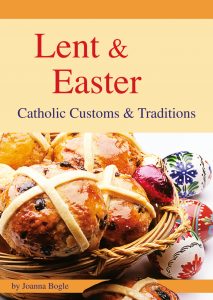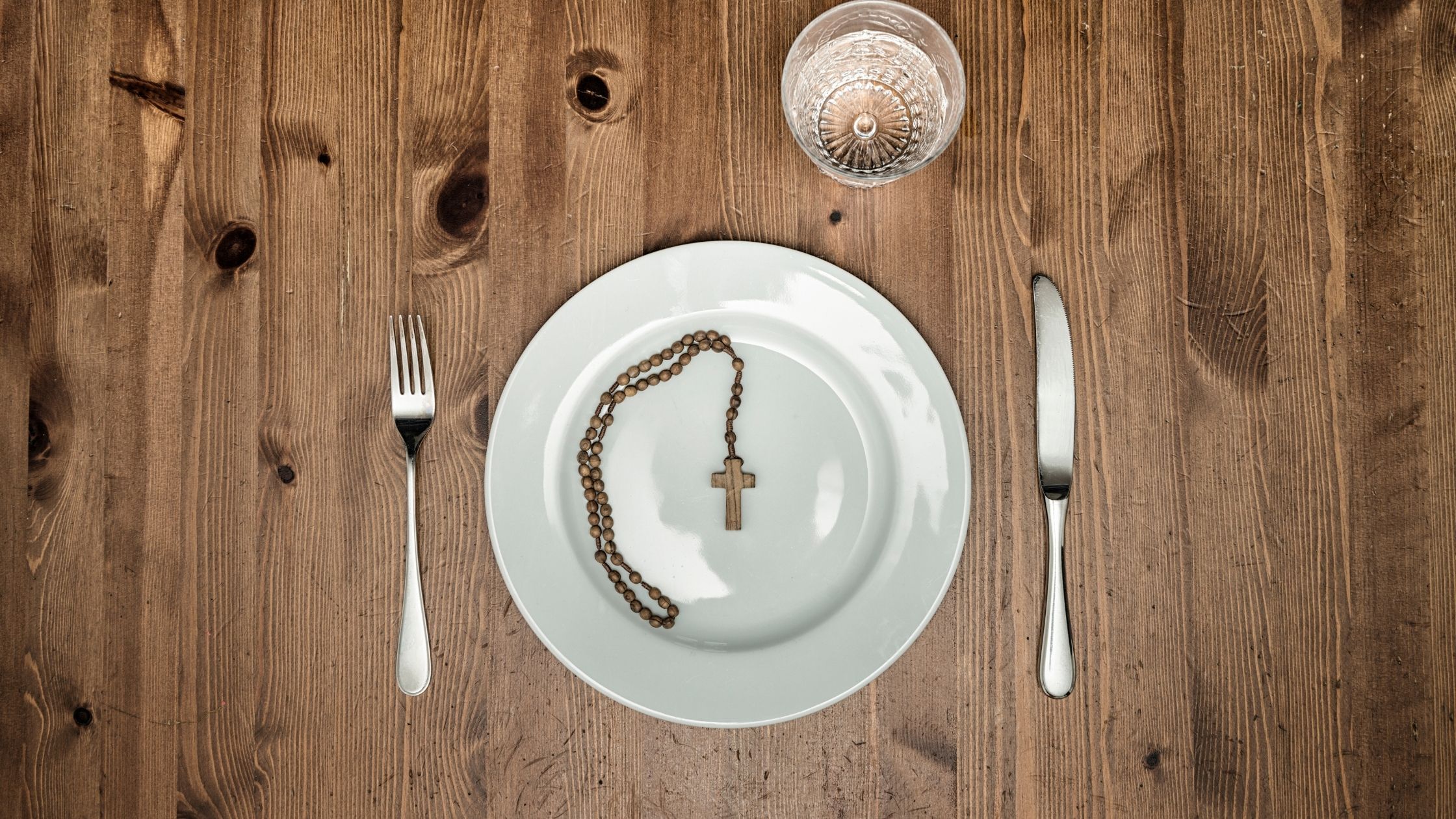“As we approach the season of Lent and the days leading to the Easter festival which focuses attention on the mysteries of our redemption, the need for religious preparation is proclaimed… These forty days which have been instituted by the Apostles should be given over to fasting. This means not just reducing food which benefits soul and body, but the elimination of unworthy habits. To these we should add almsgiving which, under the name of mercy, covers a multitude of praiseworthy deeds of charity. So all the faithful, though unequal in worldly possessions, are equal; in the inspiration of their spiritual lives and can achieve an equal standing in loving all their brothers and sisters in the human race… if we show love to those in any kind of distress then we are blessed with the virtue of charity and are at peace.” (Pope Leo the Great d. 461)
The forty days
In the Old Testament, Moses led the people of Israel for forty years through the desert. In the New Testament, Christ spent forty days in the desert in prayer before the start of his public ministry. Numbers are very important in the Scriptures, and the Church’s times and seasons reflect this. Lent is forty days long, covering a period of six weeks. You can count up the days on a calendar, starting from Ash Wednesday and leaving out the six Sundays, which brings you to Holy Saturday, the day before Easter Sunday. Each Sunday is a little Easter, a Day of Lord, and cannot be counted as an ordinary part of Lent. Some parishes provide special “Lenten charts” for children: these have boxes to colour in, one for each day, each box suggesting some special activity or small penance for that day: “Today I will do a secret good turn to someone” “Today I will not complain about anything” “No television today”. Such a chart could also be made at home or at school.
During Lent we will not use the word “Alleluia” in our prayers at Mass, and we will not be singing the Gloria. Both of these are exclamations of joy and therefore not suitable for this season of penance.
‘Lent’
The English word “Lent” is of Saxon origin – like the word “shrove” above – and refers to the fact that the days are starting to lengthen at this time of year. In Italian, the word is Quaresima, referring to the forty days. In German, it is Fastenzeit, fasting-time.
Why fast in Lent?
Fasting is a central part of Lent. We are meant to eat less and deny ourselves luxuries. We are meant to renounce even good things – cream, meat, sweets – because we are seeking to become closer to God. Even people who are not Catholics are aware of the tradition of “giving up” something during this season. But we need to understand what fasting and penance are all about:
“In our own day, fasting seems to have lost something of its spiritual meaning, and has taken on, in a culture characterised by the search for material well-being, a therapeutic value for the care of one’s body. Fasting certainly brings benefits to physical well-being, but for believers, it is, in the first place, a “therapy” to heal all that prevents them from conformity to the will of God.” (Pope Benedict XVI, 2009)
Jesus himself fasted, and showed us that this is a way to overcome evil and also to draw very close to God. It is an aid to prayer and a rebuke to Satan.
“The Gospels speak of a time of solitude for Jesus in the desert immediately after his baptism by John. Driven by the Spirit into the desert, Jesus remains there for forty days without eating; he lives among wild beasts, and angels minister to him. At the end of this time Satan tempts him three times, seeking to compromise his filial attitude towards God. Jesus rebuffs these attacks, which recapitulate the temptations of Adam in Paradise and of the Israelites in the desert, and the devil leaves him ‘until an opportune time.’”
Penance and conversion
The major theme and purpose of Lent is to offer Christians a time for penance and conversion, in preparation for the Easter feast itself and the fifty days of Eastertide that follow. Catholics are urged to confess their sins during Lent, and receive absolution. This is linked to the obligation that we must receive Holy Communion at least once a year, at Easter or thereabouts. The old expression for this is “Easter duties”.
All Catholic churches have extra opportunities for confession during Lent. Some parishes arrange special evenings when a number of priests come to the church to hear confessions, with prayers and a short sermon beforehand to help people prepare.
Catholic schools and organisations often arrange similar Penitential Services during Lent. Major centres of pilgrimage, big city parishes, and cathedrals, will have special arrangements for confession during this season too. “The confession (or disclosure) of sins, even from a simply human point of view, frees us and facilitates our reconciliation with others. Through such an admission man looks squarely at the sins of which he is guilty, takes responsibility for them, and thereby opens himself again to God and to the communion of the Church in order to make a new future possible.”
The Stations of the Cross
An important devotion in Lent is the Stations of the Cross. This is an ancient way of following Christ on his path to Calvary. Long ago, pilgrims to the Holy Land would walk the route that Christ himself took as he carried his Cross to the hill where he died. They took the tradition home with them, and the Church established the fourteen “stations”, visual images to be contemplated, as a devotion for people who could not travel to the Holy Land itself.
Today, Catholic churches have the fourteen Stations depicted around the walls, and “praying the stations” brings people together, most often on a Friday, during Lent. The Stations can also be prayed individually and silently, or by two or three friends joining together, or even in bigger groups. There are small booklets with prayers and meditations for each Station.
In some places, there are outdoor Stations of the Cross, where you can walk through woods or around a garden as you follow Christ’s path to Calvary. It is also possible simply to follow the stations prayerfully in a book while on a train journey or sitting at home.
Following Christ to Calvary in this way is a very powerful way of meditating on what he did for us, and it draws us close to him. Actually walking around a church, stopping at each Station and reading the appropriate prayers and meditation, gives us a sense of unity with Christ as he walked the painful route to Calvary. Christ’s trial before Pilate, his cruel journey carrying the heavy cross, his meeting with his mother and with the women of Jerusalem, all become events that are not remote from us. It is traditional to remain in silent prayer for an extra period when we reach the twelth station, Christ’s actual death on the Cross.
The Stations of the Cross
- Jesus is condemned to
- Jesus is given his cross
- Jesus falls the first time
- Jesus meets his mother
- Simon of Cyrene helps Jesus to carry the cross
- Veronica wipes the face of Jesus
- Jesus falls the second time
- Jesus meets the women of Jerusalem
- Jesus falls the third time
- Jesus is stripped of his garments
- The Crucifixion: Jesus is nailed to the cross
- Jesus dies on the cross
- Jesus’ body is taken down from the cross
- Jesus is laid in the tomb.
 This blog is extracted from our ebook Lent & Easter: Catholic Customs and Traditions, which describes the rich heritage of customs and traditions long practiced by Catholics down the ages, up to today and how the liturgy in turn enriches their meaning.
This blog is extracted from our ebook Lent & Easter: Catholic Customs and Traditions, which describes the rich heritage of customs and traditions long practiced by Catholics down the ages, up to today and how the liturgy in turn enriches their meaning.
To learn more about Lent and Easter customs, download your copy of Lent & Easter: Catholic Customs and Traditions from your favourite ebook platform.
